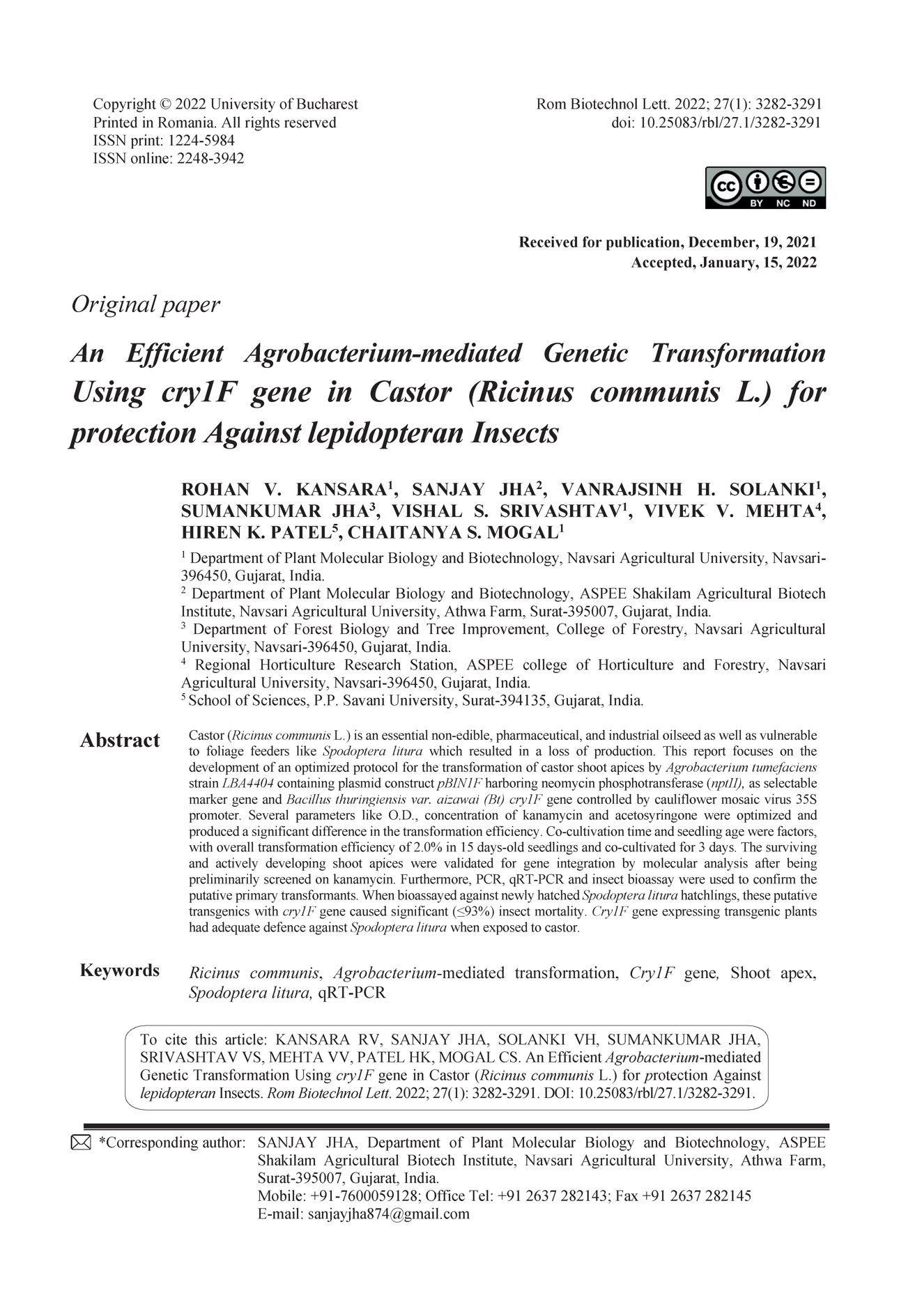An Efficient Agrobacterium-mediated Genetic Transformation Using cry1F gene in Castor (Ricinus communis L.) for protection Against lepidopteran Insects
DOI:
https://doi.org/10.25083/rbl/27.1/3282-3291Keywords:
Ricinus communis, Agrobacterium-mediated transformation, Cry1F gene, Shoot apex, Spodoptera litura, qRT-PCRAbstract
Castor (Ricinus communis L.) is an essential non-edible, pharmaceutical, and industrial oilseed as well as vulnerable to foliage feeders like Spodoptera litura which resulted in a loss of production. This report focuses on the development of an optimized protocol for the transformation of castor shoot apices by Agrobacterium tumefaciens strain LBA4404 containing plasmid construct pBIN1F harboring neomycin phosphotransferase (nptII), as selectable marker gene and Bacillus thuringiensis var. aizawai (Bt) cry1F gene controlled by cauliflower mosaic virus 35S promoter. Several parameters like O.D., concentration of kanamycin and acetosyringone were optimized and produced a significant difference in the transformation efficiency. Co-cultivation time and seedling age were factors, with overall transformation efficiency of 2.0% in 15 days-old seedlings and co-cultivated for 3 days. The surviving and actively developing shoot apices were validated for gene integration by molecular analysis after being preliminarily screened on kanamycin. Furthermore, PCR, qRT-PCR and insect bioassay were used to confirm the putative primary transformants. When bioassayed against newly hatched Spodoptera litura hatchlings, these putative transgenics with cry1F gene caused significant (≤93%) insect mortality. Cry1F gene expressing transgenic plants had adequate defence against Spodoptera litura when exposed to castor.





